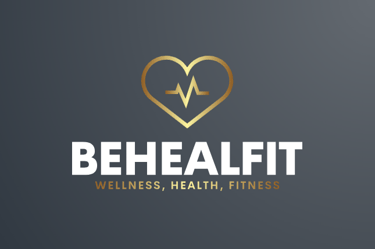OMAD Diet: The Complete Guide to the One Meal a Day Diet
Curious about the OMAD diet? This comprehensive guide explores everything you need to know about the One Meal a Day approach, including its benefits, risks, and how to follow it safely.
WELLNESSHEALTHBLOG-LIST
4/4/20256 min read


The OMAD (One Meal a Day) diet is a type of intermittent fasting where you consume all your daily calories in a single meal, usually within a one-hour window. This eating pattern has gained popularity due to its simplicity and potential weight loss benefits, but it's also a controversial approach that's not suitable for everyone. In this article, we'll delve deep into the OMAD diet, examining its pros and cons, potential health effects, and how to implement it safely and effectively.
In Brief
The OMAD (One Meal a Day) diet involves consuming all your daily calories in a single meal within a one-hour window, followed by a 23-hour fast. While it can lead to weight loss, it's a restrictive eating pattern with potential health risks and challenges.
Table of Contents
What is the OMAD Diet?
How Does the OMAD Diet Work?
Potential Benefits of the OMAD Diet
Potential Risks and Drawbacks of the OMAD Diet
Is the OMAD Diet Right for You?
How to Implement the OMAD Diet Safely
OMAD Diet Meal Planning Tips
OMAD Diet and Exercise
Frequently Asked Questions (FAQs)
My Experience with the OMAD Diet
Conclusion
1. What is the OMAD Diet?
OMAD, or One Meal a Day, is a form of intermittent fasting that involves restricting your eating window to just one hour per day and fasting for the remaining 23 hours. During your eating window, you're supposed to consume all your daily calorie needs. There are no specific food restrictions, but focusing on nutrient-dense foods is recommended. I mean, imagine eating all your food for the entire day in just one sitting! It might sound extreme, and it is!
2. How Does the OMAD Diet Work?
The OMAD diet works primarily by creating a significant calorie deficit. By limiting your eating window to just one hour, it's naturally difficult to consume as many calories as you would throughout a typical day. This calorie deficit leads to weight loss over time. It's pretty simple: you eat less, you lose weight.
Additionally, OMAD may have other potential metabolic effects, such as:
Increased Fat Burning: Fasting can promote the breakdown of stored fat for energy.
Improved Insulin Sensitivity: Restricting your eating window may improve how your body responds to insulin.
Autophagy: Fasting may trigger autophagy, a cellular cleaning process that removes damaged cells.
3. Potential Benefits of the OMAD Diet
Weight Loss: The calorie deficit created by the OMAD diet can lead to significant weight loss.
Simplicity: The OMAD diet is very simple to follow, as you only have to worry about eating one meal per day.
Convenience: The OMAD diet can be convenient for people with busy schedules, as it eliminates the need to prepare and eat multiple meals throughout the day.
Potential Metabolic Benefits: As mentioned above, OMAD may offer some potential benefits for insulin sensitivity and autophagy.
4. Potential Risks and Drawbacks of the OMAD Diet
Nutrient Deficiencies: It can be very difficult to meet all your nutritional needs in a single meal. This can lead to nutrient deficiencies over time.
Extreme Hunger and Cravings: Fasting for 23 hours can lead to intense hunger and cravings, making it difficult to stick to the diet.
Muscle Loss: Calorie restriction can lead to muscle loss, especially if you're not consuming enough protein during your eating window.
Disordered Eating: The OMAD diet can promote disordered eating patterns and may not be suitable for people with a history of eating disorders.
Digestive Issues: Eating a large meal after a prolonged fast can lead to digestive discomfort, such as bloating, gas, and indigestion.
Social Challenges: The OMAD diet can be challenging to maintain in social situations, as it may require you to skip meals with friends and family.
Not Suitable for Everyone: The OMAD diet is not suitable for pregnant or breastfeeding women, people with certain medical conditions (such as diabetes or hypoglycemia), or individuals with a history of eating disorders.
5. Is the OMAD Diet Right for You?
The OMAD diet is a very restrictive eating pattern that's not appropriate for everyone. It's important to consider your individual needs, health status, and lifestyle before trying it.
The OMAD diet may be considered for individuals who:
Are looking for a simple and convenient weight loss method.
Are comfortable with fasting for extended periods.
Have no history of eating disorders or other health conditions that could be negatively impacted by OMAD.
Are willing to carefully plan their meals to ensure they're meeting their nutritional needs.
It's crucial to consult with your doctor or a registered dietitian before starting the OMAD diet to determine if it's safe and appropriate for you.
6. How to Implement the OMAD Diet Safely
If you decide to try the OMAD diet, it's important to implement it safely and gradually to minimize the risk of side effects:
Start Slowly: Don't jump straight into OMAD. Begin with less restrictive forms of intermittent fasting, such as the 16/8 method (eating within an 8-hour window and fasting for 16 hours).
Focus on Nutrient-Dense Foods: During your eating window, prioritize whole, unprocessed foods that are rich in vitamins, minerals, and antioxidants. Include plenty of protein, healthy fats, and fiber.
Stay Hydrated: Drink plenty of water throughout the day, especially during your fasting window.
Listen to Your Body: Pay attention to your hunger cues and adjust your eating window or meal size as needed.
Monitor for Side Effects: Be aware of potential side effects, such as fatigue, dizziness, headaches, and digestive issues. If you experience any of these, consider scaling back or stopping the diet.
Consult with a Healthcare Professional: It's always a good idea to consult with your doctor or a registered dietitian before starting any new diet, especially one as restrictive as OMAD.
7. OMAD Diet Meal Planning Tips
Planning your OMAD meal is essential to ensure you're meeting your nutritional needs:
Prioritize Protein: Include a significant source of protein in your meal (e.g., meat, poultry, fish, eggs, legumes, tofu).
Load Up on Vegetables: Fill half of your plate with non-starchy vegetables to provide vitamins, minerals, and fiber.
Choose Healthy Fats: Include sources of healthy fats, such as avocado, nuts, seeds, or olive oil.
Include Complex Carbohydrates: Choose complex carbohydrates like whole grains, sweet potatoes, or quinoa over refined carbohydrates.
Consider a Multivitamin: Taking a multivitamin can help fill any nutritional gaps.
Example OMAD Meal:
Grilled chicken breast
Large mixed green salad with avocado, nuts, and seeds
Sweet potato
Quinoa
8. OMAD Diet and Exercise
Exercise can be a valuable part of a healthy lifestyle, but it's important to adjust your exercise routine when following the OMAD diet:
Timing: Consider exercising during your fasting window to potentially enhance fat burning.
Intensity: Avoid high-intensity workouts, especially when you first start OMAD, as they can lead to fatigue and muscle loss. Focus on moderate-intensity activities like walking, jogging, or swimming.
Recovery: Ensure you're consuming enough protein after your workout to support muscle recovery.
Listen to Your Body: Pay attention to how your body feels and adjust your exercise routine as needed.
9. Frequently Asked Questions (FAQs)
Q: Can I drink anything during the fasting window?
A: Yes, you can drink water, black coffee, or unsweetened tea during the fasting window.
Q: What if I slip up and eat outside of my eating window?
A: Don't beat yourself up! Just get back on track with your next scheduled meal.
Q: Is the OMAD diet safe for women?
A: The OMAD diet may not be suitable for all women, especially those who are pregnant, breastfeeding, or have hormonal imbalances. Consult with your doctor before trying it.
Q: Can I do OMAD every day?
A: Some people do OMAD every day, while others prefer to do it a few days per week. Experiment to see what works best for you.
Q: Where can I find more information about the OMAD diet?
A: Consult with a registered dietitian or check reputable sources like the Academy of Nutrition and Dietetics and the National Institutes of Health (NIH).
10. My Experience with the OMAD Diet
Okay, so I tried the OMAD diet for a few weeks to see what all the fuss was about. Let me tell you, it's definitely not for the faint of heart!
The first few days were rough. I was constantly hungry and had some serious cravings. My energy levels dipped, and I felt a bit cranky. I'm used to eating three square meals a day, so this was a major adjustment.
However, after about a week, my body started to adapt. I was surprised that my hunger pangs weren't as intense anymore. I also noticed that I had more time in my day since I wasn't prepping or eating multiple meals.
When it came to the actual meal, I made sure it was a big one, packed with protein, healthy fats, and lots of veggies. Think a giant steak with a loaded salad, or a massive burrito bowl. It was pretty satisfying, and I definitely felt full afterward.
I did lose a few pounds on OMAD, but I also experienced some drawbacks. I found it hard to maintain my social life, as most gatherings revolve around food. I also missed the enjoyment of eating throughout the day.
For me, OMAD wasn't a sustainable long-term solution. It's a very restrictive diet, and I personally prefer a more balanced approach to eating. But, I can see how it might work for some people who are looking for a simple and convenient way to lose weight.
Important Note: I am not a healthcare professional, so this is just my personal experience. It's crucial to talk to your doctor before trying any extreme diet like OMAD.
11. Conclusion
The OMAD diet is a restrictive eating pattern that can lead to weight loss, but it's not suitable for everyone. It's important to carefully consider the potential benefits and risks before trying OMAD and to implement it safely under the guidance of a healthcare professional. Focus on nutrient-dense foods, stay hydrated, and listen to your body to minimize the risk of side effects and maximize the potential benefits.
